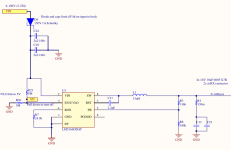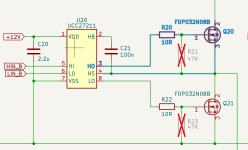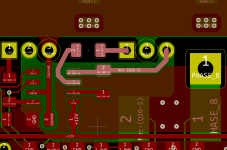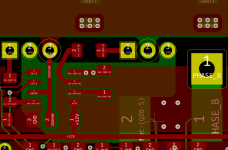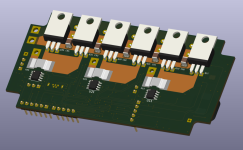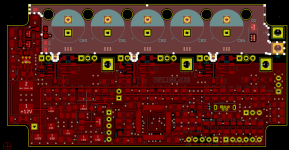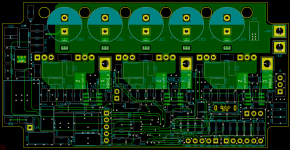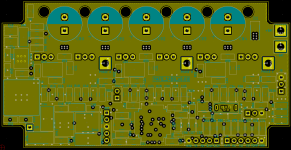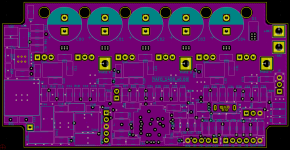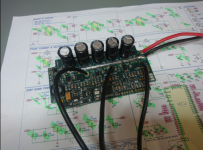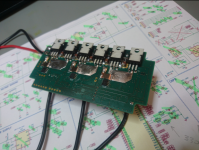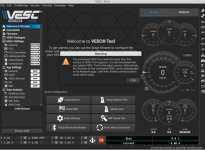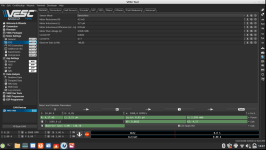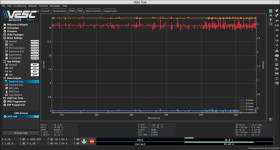Dear All,
I would like first to thank all the members on this forum who shared their knowledge on FOC control design.
Finally, after investigation around MP2-ESC, Cheap FOcer, A200S, and other VESC-compatible HW, I have decided to design my ESC with the following constraints:
- Reliability/Robustness on top priority
- 14s Battery
- 50 Amps per phase
- TO 220 FET's
- Classic 8 pin drivers for each leg.
- Ease of DIY soldering AND servicing.
- No fine pitch components, except MCU (no choice !)
- Running VESC FW compiled with the appropriate parameters set
- Full compatibility with VESC tool
- 4 layer design PCB
- HAMMOND 1490WB Aluminum enclosure (106mm x 54mm pcb size)
So, here is the first draft of the schematic and any feed back will be welcome.
I would like first to thank all the members on this forum who shared their knowledge on FOC control design.
Finally, after investigation around MP2-ESC, Cheap FOcer, A200S, and other VESC-compatible HW, I have decided to design my ESC with the following constraints:
- Reliability/Robustness on top priority
- 14s Battery
- 50 Amps per phase
- TO 220 FET's
- Classic 8 pin drivers for each leg.
- Ease of DIY soldering AND servicing.
- No fine pitch components, except MCU (no choice !)
- Running VESC FW compiled with the appropriate parameters set
- Full compatibility with VESC tool
- 4 layer design PCB
- HAMMOND 1490WB Aluminum enclosure (106mm x 54mm pcb size)
So, here is the first draft of the schematic and any feed back will be welcome.


